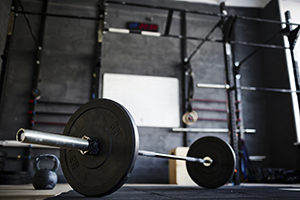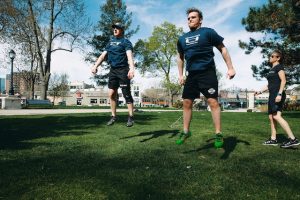Three Hockey Training Exercises/Techniques That Give You Slower Legs (Avoid)
There are lots of ways that skaters and goalies make themselves slow – it is often a result of players being more interested in working hard than working on the right things.
I have picked three of the most common ways players misdirect their hockey training to vacuum the speed right out of their legs.
The Leg Press
You know by now that I am not a fan of this contraption – in fact, I think I once declared it the ‘worst hockey training exercise’ you could do (and I already received angry emails about that the first time, so no need to repeat that).
I could see it having a use in a rehabilitation setting, maybe for single leg eccentrics, but not for any player who is 100% healthy and training to improve performance.
The leg press will make your legs stronger; that is not the problem. The problem is this; it ONLY makes your legs stronger.
Does it teach your hips to stabilize? No – the machine does the stabilization.
Does it strengthen your torso and teach it to stabilize? No – your torso is cut right out of the equation.
Does it teach you to balance under load? No- again, the machine does that.
I don’t have to remind you that hockey is one of the (if not THE) most dynamic sports you will find. With impact, outrageous speeds and a the demand to skillfully handle the puck.
Imagine how many guys would quit football if you now had to dribble the ball while getting smashed by other players.
So hockey players need it ALL. And their off-ice hockey training needs to prepare them for the strength and stability they need so they can use that speed and power on the ice. Leg Press will not do that.
What to do instead?
- Front Squats
- Split Squats (DB or BB)
- Single Leg Squats
- Step Ups
- Sumo Squats
High Rep Lunges
I am not sure when or why Lunges became a high rep exercise of 10-15 reps per leg. I think that is fine if you are doing one of those ‘As Seen On
TV’ workouts that you can do in your living room as you try to tone your tummy and firm up your butt – not fine if you want to be sneaky-fast on the ice like Martin St. Louis.
I think it might be the balance requirement of lunges that makes players want to do higher reps; consider my line of reasoning…
Lunges require quite a bit of balance.
If you struggle with the balance then you will use a lighter weight.
If you use a lighter weight, you don’t really ‘feel’ the exercise until you get into the higher rep range.
Make sense?
So really the problem is you lack the balance to really load up this exercise. So let’s fix that. You can add a lunge matrix to your dynamic warm up to practice the movement unloaded and warm up your legs for practice, games or workouts.
To do the lunge matrix you simply step into forward, lateral and reverse lunges, returning to your single leg balanced position each time. We typically do 3 each leg/each direction as part of the warm-up.
Once your balance has improved; then start to load this one up staying in the six-rep range (on each leg). My preference is for the reverse lunge as it puts more load on the glutes and is less strain on the knee.
High Volume Plyometrics
I might sound like a broken record on this one, but I still see it happening and I still see it getting programmed into off-ice hockey workouts.
If you are using Plyometrics to develop leg power and speed (which is the purpose of the technique), then the volume must be low and there must be max effort and max quality on each rep.
You cannot perform 15, 30 or 50 squat jumps with max quality. Your 15th jump will be nowhere as high as your first jump – this is our measure of quality. Understand that difference?
You might be trying to jump as high as you can, but you are not getting the same quality. This is stamina training, NOT speed training.
Is stamina important? Absolutely!
But this article is about speed and speed is simply how fast you can go, not how long you can go for.
So luckily the answer is simple; you just need to adjust your dose.
If you are trying for speed, keep your plyo volume at six or fewer reps per set and don’t forget to take at least 5-times as much rest as work for these low volume plyos. So if it takes you 5 seconds to do your set, you should be resting at least 25 seconds. And keep an eye on the quality, if you are losing the quality, then increase the rest interval.
Go with 12 sets in total of plyos (4 exercises, three sets each), but include either skill training (stick handling or hand-eye drills) or core training between exercises to provide active rest.
So there are three exercises or training mistakes that will make you slower on the ice. Remember, you don’t become MVP by beating up your body with your off-ice hockey training; you become MVP by being lightning fast on the ice like Connor McDavid.
These strategies will help you do that; now go forth and dominate!
M

Only available until midnight Monday, May 15th,
then it gets locked back in the vault until next year.
SKATERS ONLY! This is NOT a goalie program.

